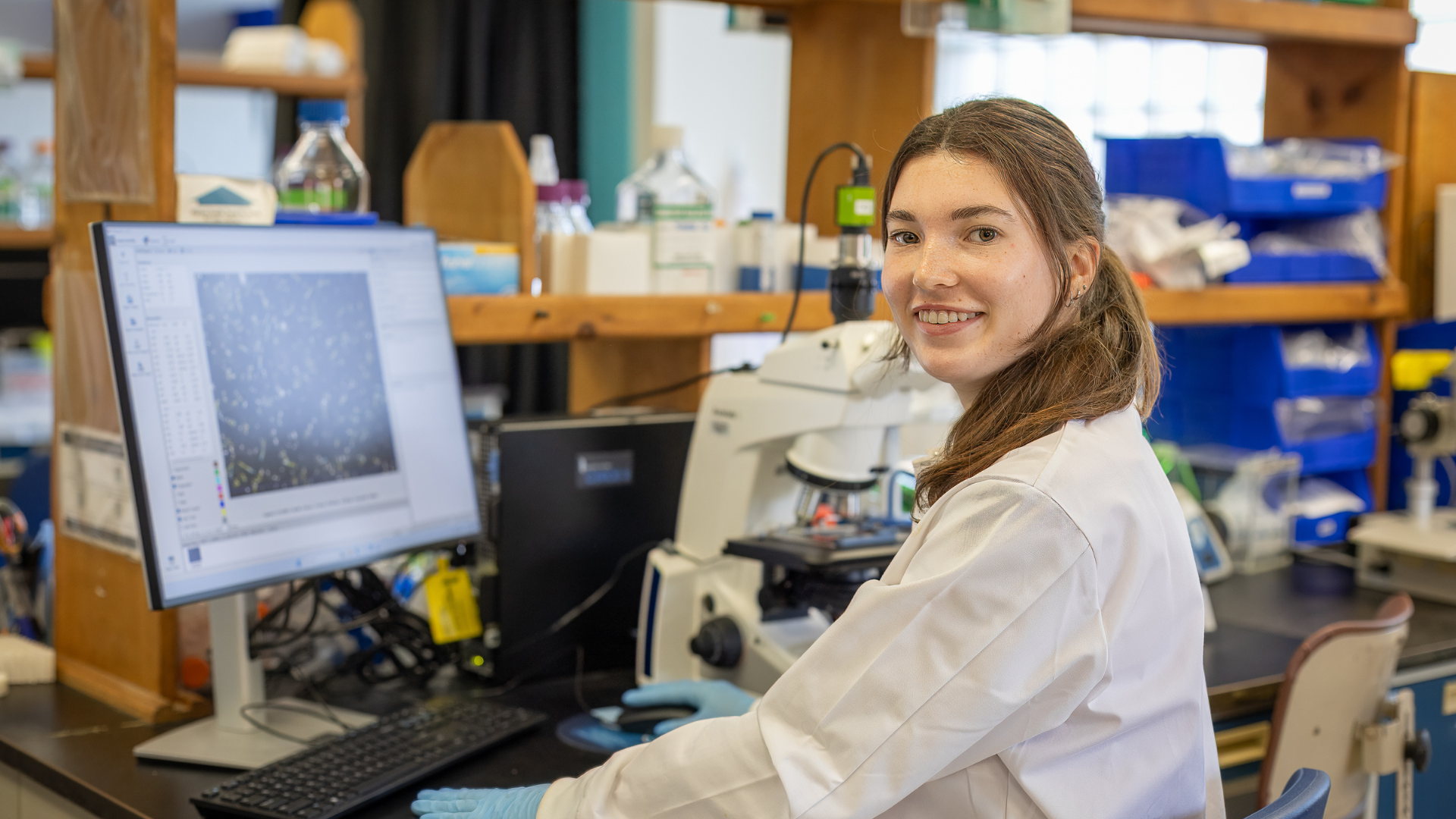
Undergraduates Conducting Research

Alana Wolfson '26 (ANSC)
Reed Lab
Alana Wolfson, an animal science sophomore in the honors program, is working with Dr. Sarah Reed on evaluating poor maternal nutrition and its impact on multiple generations of sheep. She has been a part of Dr Reed’s lab starting the fall semester of her freshman year. Moreover as an IDEA Grant and American Physiological Society SURF award recipient, she was given the opportunity to apply her inquiries to the sheep project.
Specifically her project involves evaluating the impact of poor maternal nutrition on muscle fiber morphology, and a phospholipid responsible for mitochondrial function. Currently, she’s gained experience on histology, mitochondrial enrichment, fluorometric assays, and DNA/RNA extraction techniques. The potential future works of her project would involve looking into other aspects that can impact ATP synthesis, mitochondrial activity, and the overall development of an animal.
This coming May 2025, Alana will present her work at the American Physiological Society’s Annual Summit with various figures in academia across the U.S. She is looking forward to networking and learning about current research in physiology and cell biology.
Alana’s future aspirations relate to both her interest in animal welfare and research. Alana’s past experience in shelter medicine has inspired her to dive deeper into aspects of everyday life such as nutrition, that can have an immense impact on an animal’s health. Her main goal is to apply her passion of veterinary medicine and animal science research for the rest of her life. She is extremely grateful for the research opportunities Dr Reed and the sheep project team has provided her, and hopes to continue exploring more questions and ideas in her lab.

Loretta Bigelow '26 (ANSC)
Zhai Lab
Loretta started her work by learning about the effects of PH in cattle. This condition is a noninfectious disease that reduces animal feed efficiency and growth rate and can eventually progress to right-sided heart failure. Beyond this, PH can also reduce the shelf life of fresh muscle food products by 30%, causing major economic losses and food waste. PH can be caused or worsened by high altitudes >1,524 m (5,000 ft), while high-altitude beef production systems in the US produce about 1.5 million calves per year. Approximately $60 million are lost annually due to complications associated with PH in high-altitude beef cattle production.
Muscle proteome is the complete set of proteins a muscle expresses at a particular time. Loretta started her work by researching each individual muscle protein changed by PH. She is currently compiling the whole bioinformatic output from this comparative dataset to conclude their interactive effects and how they work systematically to lead to phenotype differences in muscle and muscle food.
She is very grateful for the support and encouragement from Dr. Zhai and for the introduction to the field of proteomics. Loretta is planning on applying to veterinary school with the goal of working with large animals, and she believes that her experiences working in the Zhai lab will greatly benefit her in the future and open lots of doors. Dr. Zhai and his lab received a four-year USDA grant to conduct experiments to manage production efficiency and product defects caused by PH and understand this dynamic process from multiomic and mitochondrial biology perspectives.

Stephanie Gilroy '26 (ANSC)
Gervasi Lab
Stephanie Gilroy, a Junior in Animal Science and a member of the Honors Program, began her research in Dr. Maria Gracia Gervasi’s lab in the fall of 2024. Dr. Gervasi’s research focuses on the impact of various sperm incubation conditions on early embryo development in both mice and cattle.
Over the course of the semester, Stephanie has learned a variety of essential laboratory techniques under Dr. Gervasi’s guidance, including pipetting, adjusting the pH of buffers and solutions, and measuring osmolarity. She has also had the opportunity to conduct hands-on experiments, such as staining sperm samples to identify the location of specific proteins on the sperm. Additionally, she learned to capture DIC and fluorescent images of stained sperm using a fluorescent microscope.
Other valuable experiences have included thawing cryopreserved sperm and counting sperm samples, extracting proteins from sperm, and performing Western blotting to analyze sperm protein levels.
Stephanie is incredibly grateful for this hands-on experience and for having Dr. Gervasi as a mentor. She has already gained so much knowledge in just one semester, and she is eager to continue her research in the coming semesters to deepen her understanding and contribute to the lab's work.